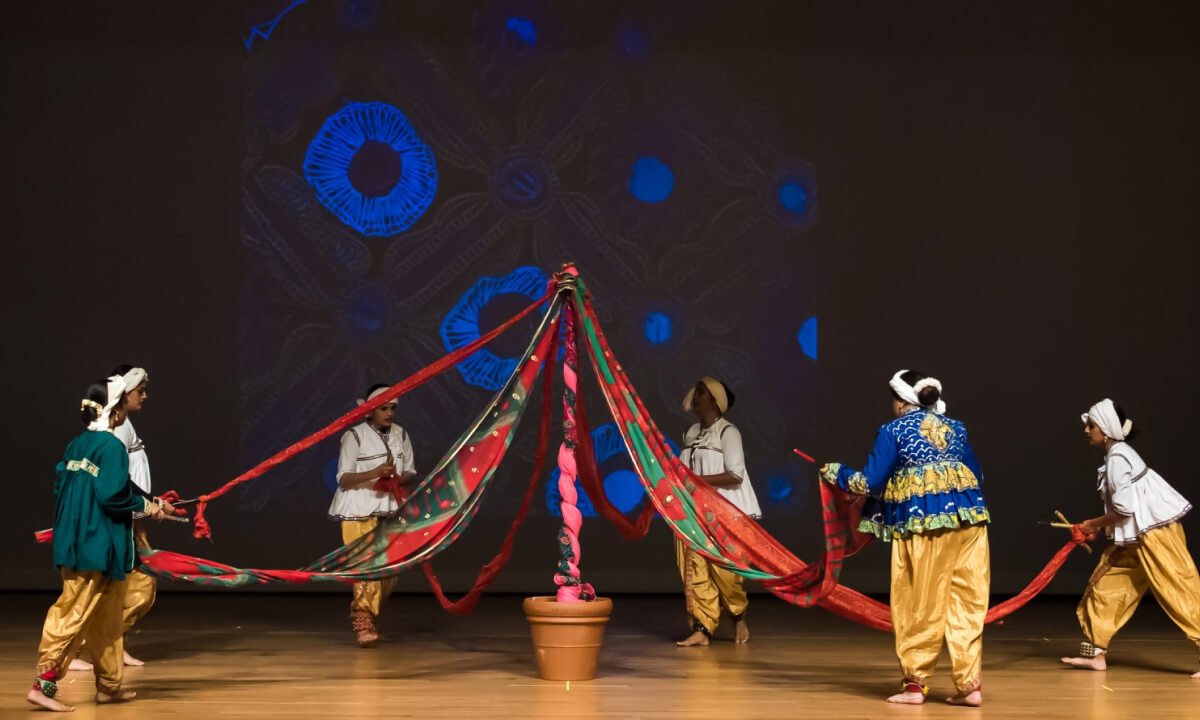folk dance
A 250-year-old Navratri Garba dance from Saurashtra, performed by the Koli and Kanbi communities during Sharada Navratri.

Gof-Gunthan is a traditional Navratri Garba dance with over 250 years of history, performed annually during Sharada Navratri (September–October). Popular among the Koli and Kanabi communities in Saurashtra, this dance form is a variation of Dandiya Raas, another prominent Garba dance. In Saurashtra, men typically perform Raas, while the women’s version is called Raasda. Gof-Gunthan, also called Athanga Nritya, is one of several Raas variants from this region, along with Solanga Raas and Mer Dandiya Raas.
This intricate dance involves each participant holding a stick in one hand and a string in the other, which is tied to a ring suspended from the ceiling. The dancers weave a braid with the strings while performing different Raas styles such as Fundadi, Bethak, and Thappa. The climax occurs when the dancers, synchronized with the increasing tempo of the music, strike their sticks rhythmically while unweaving the braid they had created. This complex and visually captivating dance is like Pinnal Kollattam, a South Indian folk dance.
Prop used to perform the Gof-Gunthan folk dance.
The accompanying music typically features instruments like the harmonium, tabla, dhol, and manjira, creating a vibrant auditory backdrop for the performance. Gof-Gunthan’s significance extends beyond its steps, symbolizing unity, cooperation, and the cyclical nature of life, reflected weaving and unweaving the braid. The ring and strings represent the interconnectedness of the dancers and their shared energy.
In terms of attire, dancers wear brightly colored Ghagra Cholis (skirts and blouses) or traditional Garba attire, which further enhances the visual impact of the dance. Ornamentation such as mirror work and embroidery, often seen on the costumes, reflect the cultural richness of Gujarat.
NSDA students performing Gof-Gunthan on stage.
Historically, Gof-Gunthan has ties to both religious celebrations and agricultural festivals, as many traditional folk dances in Gujarat have agrarian roots. The intricate movements may have evolved to celebrate the harvest season and seek divine blessings for future prosperity.